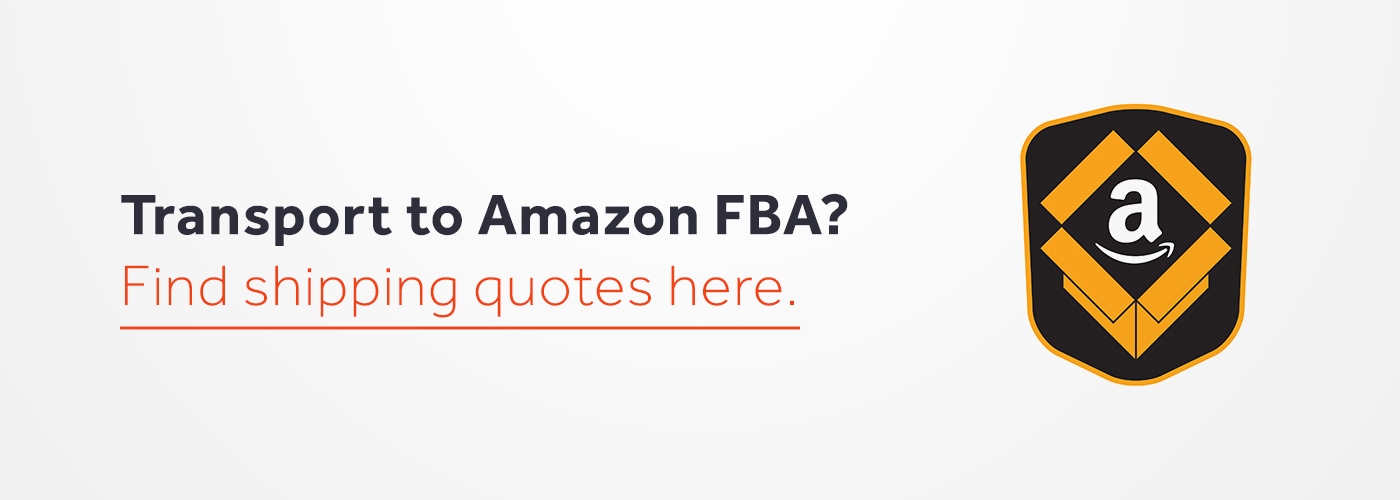This post aims to help you succeed with your first shipment of products to Amazon FBA. Because Amazon has rather strict shipping guidelines, we will go through their requirements for preparation, packing, labelling, and deliveries to make sure your first shipment and encounter with FBA goes well.
If selling on Amazon is completely new to you, you must first and foremost register as a seller on Amazon. Simply follow the step by step instructions to create an Amazon Seller account. When you are ready to list your products, select the Fulfillment by Amazon (FBA) option. With this option Amazon will stock, pack, prepare, and ship your product to a buyer, as well as manage customer service and returns. Your only responsibility as seller is to keep track of your inventory, and restock when necessary.
An outline of the FBA process
In the following we go through the process of selling your products on FBA. Follow these steps, to make sure your first FBA shipment to the Amazon Fulfillment Centre goes well:
- Decide what products you want to sell on Amazon FBA (and get in touch with a supplier)
- Register for an Amazon Seller Account
- List the products you want to sell on Amazon FBA, and create a Shipping Plan via your Seller Account
- Select a freight forwarder to handle transportation from your supplier to the specified Fulfillment Centre (your selected freight forwarder must know and comply with Amazon’s requirements for prep, packing, labelling, and delivery of your products)
- Delivery of your products to the assigned Amazon Fulfillment Centre
This post will focus on steps 3-5, and will cover everything you need to know in regard to getting your products successfully delivered to Amazon FBA.
Build your Shipping Plan on Amazon
Once you have everything set and are ready to send your products to Amazon FBA, you log on to your Amazon Seller Account and create a new Shipping Plan. First off you need to specify the products you want to send to Amazon. Then you need to specify if you are selling ‘Individual products’ or ‘Case-Packed products’. Tick off ‘Individual items’ when you are shipping boxes that contain one or more products that varies in quantity and condition. Select Case-Packed Products if all the products in your box have matching SKU (a product’s unique identifier) and condition, i.e. every box with the same product contains the same quantity and has been pre-packed by the manufacturer. Next, you will go through the following six-step shipment creation workflow:
- Set the quantity for each product
- Prep guidance depending on the type of products you have
- Print labels
- Review and approve your shipment to FBA
- The shipping method along with carrier details. For this step you also specify number of boxes and print your shipping labels. (If your shipment is eligible for Amazon Partnered Carrier Programme, this is also where you schedule and pay for your shipment)
- A summary of the shipment process, where you can review the contents of your shipments, and track your shipment and its receiving status at the FBA warehouse
For step 2 and 3: If you prefer not to prepare and/or label your products yourself, Amazon FBA offers to handle this for a fee via their FBA Label Service and FBA Preparation Service. Simply select ‘Amazon’ in the ‘who-prepares’ dropdown menu and/or ‘Amazon’ in the ‘who-labels’ dropdown menu. For more information on fees and how much they are, check this link.
Get detailed information on how to create your first Shipping Plan here.
Finally, check that your Shipping Plan is accurate and reflect the products you want to send to Amazon. When you are satisfied, proceed to approve your shipment(s). Based on your Shipping Plan, ie. which products you are shipping as well as where you are shipping from, Amazon assigns a Fulfillment Centre to you. In other words, you have no influence on which warehouse you will be shipping to.
When you are satisfied with your Shipping Plan, the actual shipping of your products is next.
Shipping your products to an Amazon Fulfillment Centre
When shipping your products to an Amazon Fulfilment Centre, you have three options:
- Shipping to Amazon FBA with a freight forwarder
- Have your supplier ship your products directly to Amazon
- Select to ship with Amazon’s partner carriers via the ‘Partnered Carrier Program’ (Eligible for small parcel deliveries only, and within Amazon European markets)
No matter which of the above options you opt for, it is absolutely crucial that Amazon’s requirements for prep and labelling are met. If not, you may risk Amazon rejecting your shipment, setting you back an awful lot of time and money.
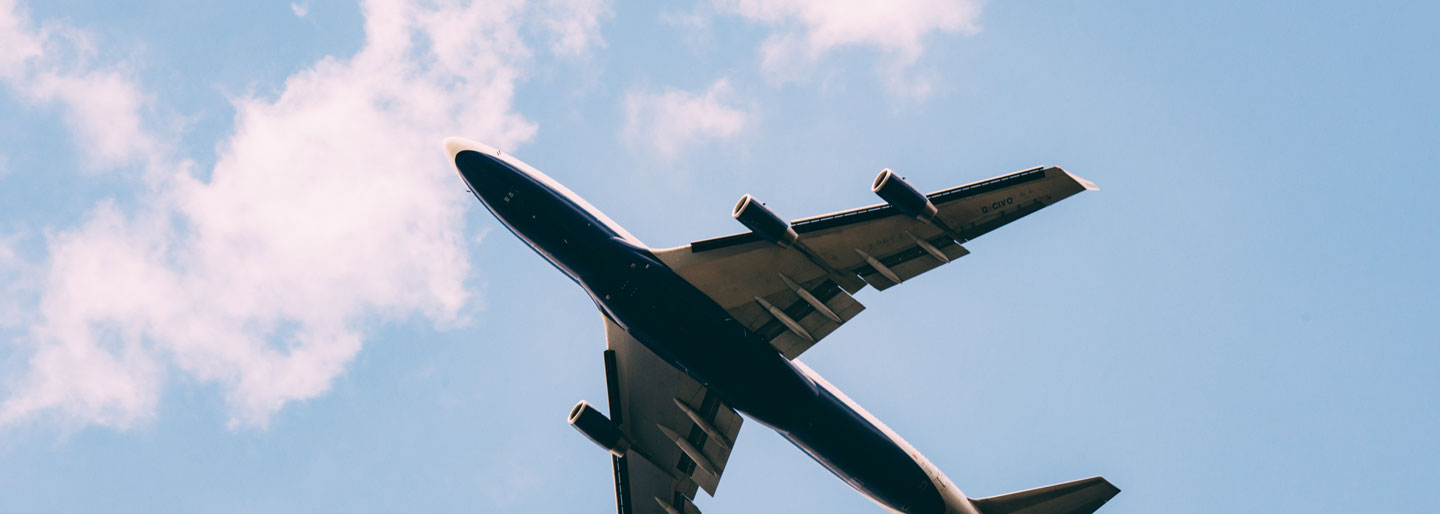
Choosing your supplier to handle prep and shipping
If you have your supplier send your products directly to Amazon, this can save you both time and money, as you cut out the ‘middleman’. However, instead you must carefully instruct your supplier on Amazon’s guidelines for prep and labelling and forward labels for your supplier to place correctly on your products. Everything must be aligned perfectly for the delivery at Amazon warehouse not to go wrong. Surely, it is possible, but we do not recommend this solution for other than small parcel shipments.
Another thing to consider is the fact that if you have your supplier ship your products directly to Amazon, you potentially risk that once your supplier becomes familiar with the FBA requirements and process, there is nothing stopping your supplier from cutting you out and selling his products directly to Amazon going forward.
Finally, if you opt for this solution, make sure that your supplier ships your products with duties paid (incoterm DDP), as Amazon will not pay any shipping or customs fees on your behalf.
Shipping to Amazon FBA with a freight forwarder
The logistics of getting your products to Amazon FBA can potentially take up a huge amount of time, energy, and money. Therefore, it is absolutely crucial that your freight forwarder understands the process of moving international goods to Amazon.
Once your shipment exceeds approximately 135 kg, it is no longer beneficial for you to use the well known courier (express) services, like DHL, UPS, FedEx etc. Instead, for larger overseas shipments you must find a freight forwarder to handle your shipment from your manufacturer to Amazon FBA.
A freight forwarder will first and foremost be able to coordinate every step of the shipping process for you, which can be very helpful if you are inexperienced in the shipping business. Additionally, if you go with a suitable freight forwarder who knows the FBA business – which we strongly recommend – they (can) even prep your goods for a smooth delivery at Amazon, this includes, but is not limited to:
- Check your goods for damages
- Check that box size and weight do not exceed Amazon’s requirements
- Label your boxes for you in accordance with FBA guidelines
- Pack your boxes on pallets, including stretch wrap and labels
- Arrange an appointment for delivery
- Transport the products to the specified Fulfillment Centre
The obvious pros for this solutions is that you (i.e. your freight forwarder) get to quality check your products, as well as secure that Amazon’s standards for packaging and labelling are met, and thus reducing the risk of having your shipment rejected by Amazon FBA.
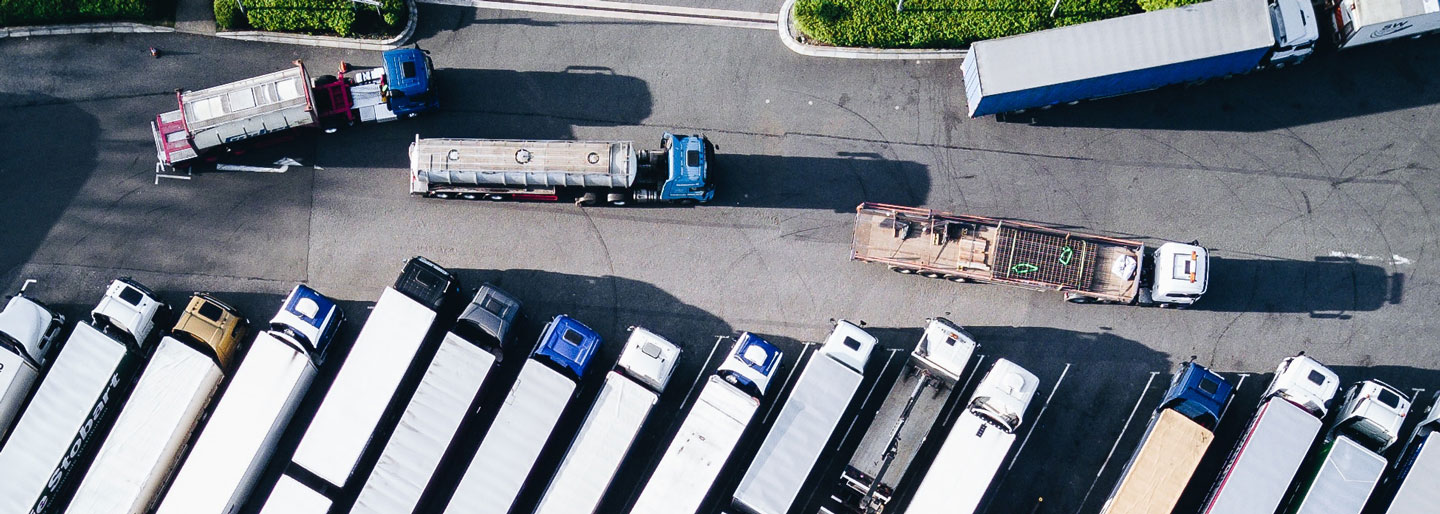
The downside for this solutions is the extra cost you pay a ‘middleman’ to prep your products, or the extra time you must spend doing it yourself, if you have the products sent to your address instead of letting a freight forwarder do it. And lastly the cost for the extra handling between your supplier and Amazon’s Fulfillment Centre. However, it is our experience that it is well worth spending a little extra as many things in this process can go wrong. Trusting your products with an experienced Amazon FBA forwarder, you’ll benefit greatly from their expertise and resources, and will be guaranteed that your products arrive safely at the end destination.
Amazon Partnered Carrier Programme
If you only have a small shipment, you might qualify to benefit from Amazon Partnered Carrier Programme – depending on where you are shipping from and the size of your shipment.
To qualify for Amazon Partnered Carrier Programme, the length of your box must not exceed 75cm, and maximum weight to pass without further requirements is 15kg. If your package weights between 15-30kg, it must be labelled “Heavy Package/Team Lift” viewable from both top and sides of each heavy-weight unit.
The Partnered Carrier Programme allows Sellers on Amazon to benefit from courier rates negotiated by Amazon. This applies to domestic shipments of small parcels from any UK address to an Amazon Fulfilment Centre in the UK. Additionally, international deliveries are available from an Amazon European marketplace to any European Fulfillment Centres, including United Kingdom, Germany, France, Italy, and Spain.
For overseas shipments, or shipments from countries other than the above mentioned, you must arrange the transportation yourself. Also, if your shipment equals to more than half a pallet, it must be palletized, and Amazons Partner Program will not be available to you. Once you reach the size of half a pallet, you must find your own forwarder, and a delivery appointment must be made between the Fulfillment Centre and your carrier.
Read more about Amazons partnered shipment options here.
If you choose to ship with Amazon’s partnered carrier program, you must contact the carrier yourself and schedule a collection. For more information on how to schedule an appointment with UPS, see here.
Now to a crucial part of using the Amazon FBA service: Preparing your products in accordance with Amazon requirements. Whether you do this yourself, or have a third party handle it for you, it is important that you get it right to avoid Amazon rejecting your products at delivery.

FBA Shipping guidelines: How to prepare your products for shipping and fulfillment
At first glance, Amazon’s shipping requirements to send your products to an Amazon Fulfillment Centre can seem complicated and overwhelming. To ensure everything runs smoothly with your shipment, it is important that you prepare and label your products in accordance with Amazon’s guidelines. If not, Amazon may decline receipt of your shipment as it arrives at their Fulfillment Centres. Below, you will find what your need to know.
Preparation requirements
When you are registering your products on your Amazon Seller Account, Amazon provides you with a detailed guide for products that require special packaging and prep directly online.
The list of special prep categories include:
- Fragile
- Liquids/gels
- Textiles
- Plush/baby
- Sharp
- Small
- Adult
Whether you are selling baby products, liquids, or fragile items, Amazon has guidelines for everything. FBA Preparation video tutorials can be found via this link.
Labelling & barcode requirements
All products sent to Amazon FBA must contain a single, scannable, correct barcode in order for the Fulfillment Centres to identify and register them as they arrive. If Amazon cannot read your product’s barcode, they are likely to encounter problems such as determining what your item is, who it belongs to, or where it has to go. Applying this label properly will ensure that the correct unit is received and that your inventory is accounted for.
Amazon FBA distinguishes between products you have to label yourself and products which already contain an eligible manufacturer barcode. The latter they refer to as ‘Stickerless, Commingled Inventory’, and are thus products you can send to Amazon Fulfillment Centres without having to label them first. In the following we will clarify your two barcode options for shipping to FBA:
- Use existing Manufacturer barcodes (for qualifying products only)
- Print Amazon barcodes/labels from your Amazon Seller Account
Stickerless, Commingled Inventory
Some products qualify to use the manufacturer barcode, and if your barcode preference is set for this, the manufacturer barcode will be used to identify and track your inventory throughout the Amazon fulfilment process. Do note that when you opt for this option your products will be commingled with other sellers’ items of the same products.
In practice, this means that if a customer buys one of your products, Amazon will ship the product that is available nearest to the specific customer – even if it is not ‘your’ products, i.e. you did not send this particular product to the Fulfillment Centre it is taken from. In a case like this, Amazon will assign an equivalent product from your inventory to the seller whose product was used to fulfill the customer’s order, and you will of course get the payment for the sale as per usual.
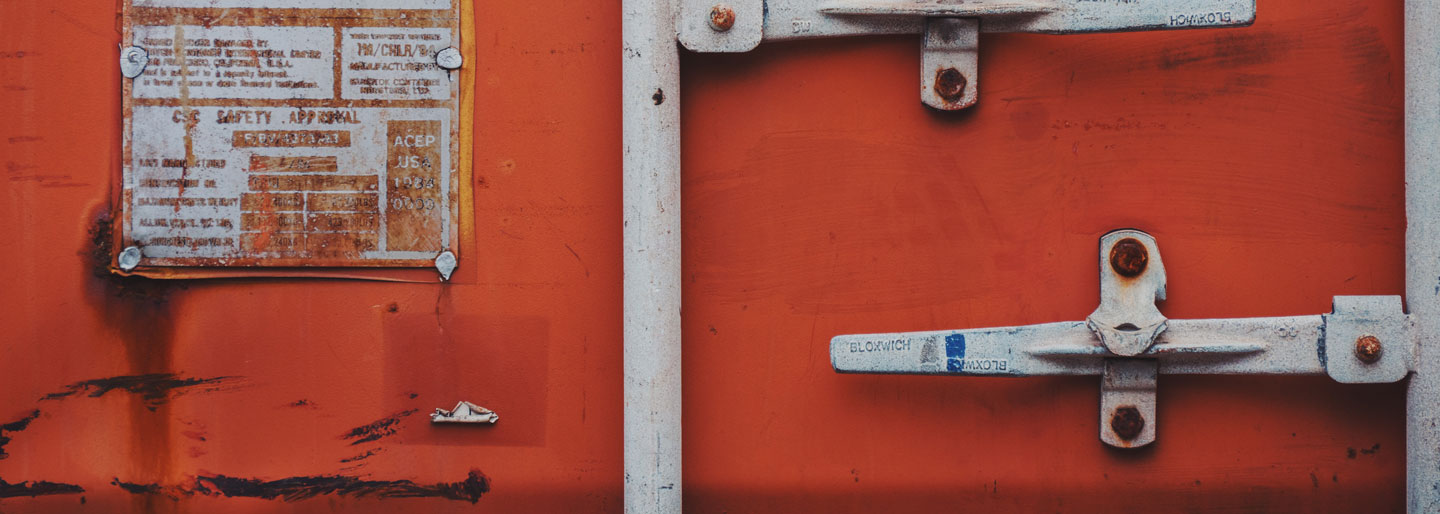
Finally, when you use the manufacturer barcode as your label option, it allows Amazon to provide fast shipping of that particular product, and it will also save you both time and money, as you do not have to apply Amazon barcodes to your products yourself.
Eligible manufacturer barcodes include UPC, EAN, and ISBN, and in order to use these your product must comply with the following:
- Your product(s) must be new
- Your product(s) must have a single scannable barcode that corresponds to a single ASIN (Amazon barcode) in the Amazon catalog
- Your product(s) must not have an expiration date
- Your product(s) must not be consumable or topical (e.g. cream, shampoo, or cosmetics)
Labelling your products yourself
If your products are not eligible for stickerless, commingled inventory, you must label your products yourself with FBA labels, and you must follow Amazon’s label requirements in order for your shipment to arrive to Amazon’s Fulfillment Centres fast and accurately. Amazon barcodes include ASIN and FNSKU.
When creating your Shipping Plan, step three will let you print your labels – these you will need to forward to your freight forwarder, if you are not labelling the products (and boxes) yourself.
Each of your products require a scannable label – this goes for all individual products, i.e. if you have a big box containing 10 sets of headphones, every single set must be labelled with a barcode, it’s not enough to only label the box containing your products. In addition, it is crucial that the label is placed on a smooth surface, and covers any existing barcodes. Do not place the label around corners, curves, and edges, as this can affect the ability to scan them and can slow down the process of receipt, ultimately delaying your units availability for sale.
For products that require additional prep, such as bagging or bubble wrap, you must ensure that the labels are scannable without opening the packaging. This goes for the stickerless, commingled inventory as well. Moreover, label barcodes may not be smudged, faded or torn, as this too will complicate scanning them. The same goes for labelling your shipping boxes: Labels must be placed on top of your box(es) away from box seams, edges, or corners, and if you are reusing boxes, make sure you cover old labels.
Watch the video below to see requirements for labelling your products:
Amazon FBA label requirements
Be aware of the pallet requirements
If you are delivering pallets to an Amazon Fulfillment Center, it is important to be aware of the following requirements:
- When delivering pallets to Fulfillment centres in EU countries, pallets must be 80×120 cm (Standard European pallet)
- When delivering stock to the UK, Pallets must be 120×100 cm (UK standard pallet). Other pallet sizes will be rejected
- Maximum height for single-stacked pallets are 1.7m and 1.5m for double-stacked pallets (including the height of the pallet)
- Pallets must not exceed 500kg in gross weight including the weight of the pallet
- Pallets must be stretch-wrapped in clear plastic
- Pallets that are internationally imported must comply with the ISPM15 standard (heat treated pallets)
- Maximum weight for each carton on the pallet is 15kg. If it exceeds the limit of 15kg, it must be clearly marked as “Heavy weight” on both top and sides of the box
- All shipments other than small parcel deliveries must palletized
- All pallets carrying mixed but visually similar products must be labelled ‘mixed merchandise’ or ‘mixed SKUs’
- All pallets must contain the following information in the upper right corner on one of the sides:
– Supplier name
– To and from addresses
– PO number(s)
– Number of cartons
– Number of pallets (“Pallet #___ of ___.”)
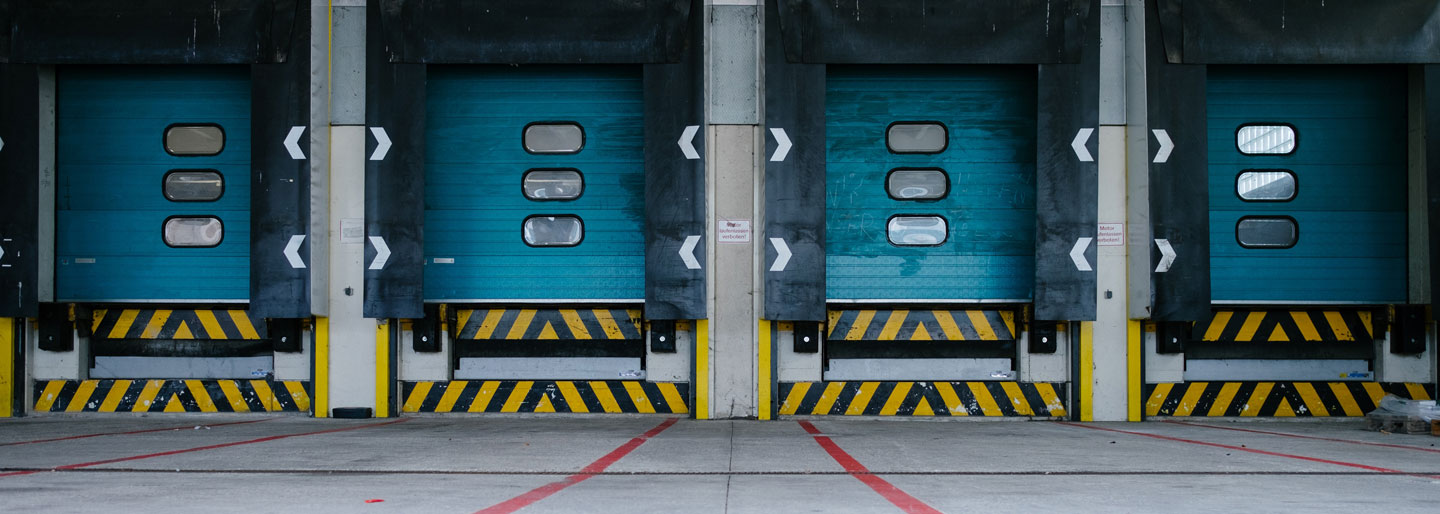
Requirements for scheduling deliveries to Amazon FBA
Scheduling appointments to deliver your products successfully at Amazon must also follow certain guidelines.
You must fill in the Booking Form and specify the requested information, such as number of pallets and cartons, and PO number, which is your Amazon Reference ID. When you have filled in the Booking Form, you forward it to your carrier, who is then to contact the appointed Fulfillment Centre and set up the delivery appointment. Along with the PO number, the carrier must also provide a PRO number and a Bill of Lading (B/L) number.
Your designated carrier must request a delivery appointment at least 24 hours in advance for all inbound deliveries. Should you choose to use Transporteca for you FBA delivery, we will of course handle these arrangements on your behalf.
Due to the fact that Amazon requires FBA shipments to be delivered at very specific times – sometimes late in the evening and with very narrow time slots – this can lead to delays in the initial transit time that we present to you. Transporteca, like any other carrier, cannot contact Amazon to schedule a delivery appointment until the goods arrive at the freight forwarder’s warehouse in the destination country, and the time slot that Amazon gives can potentially be a few days after your products have arrived here.
Finally, It is required that all palletized deliveries are made on a lorry of minimum 7.5 ton. This to ensure that the lorry is able to reverse up to the loading dock, and to allow a powered pallet truck to access the rear of the lorry. Private vehicles like cars, vans, and pickups will be rejected.
Deliveries gone wrong
No one wants to worry about shipments and deliveries. Therefore, it is important that you are familiar with the most typical issues in the receiving process that can cause delay, or even rejection of your products. Be aware of the following errors to ensure a successful delivery of your products:
- When your products are not packed properly for storage
- When products are labelled incorrect or have unreadable labels
- When your shipment contains unexpected items: for example multiple shipments in same box, no listing created, or you have shipped more than indicated etc.
- When there are products ‘missing’, for example point-of-sale boxes used as packaging, or if sets of multiple products are labelled wrong.
- When the product condition or description does not match what is specified in Amazon’s systems, for example wrong version, condition, or binding.
- When the height of you pallet exceeds the limit of 1.7m for single-stacked and 1.5m for double-stacked
- When dangerous items pose a safety hazard
- When the same barcodes are used for different products
- When liquid products are not securely sealed and/or have leaked
- When you send case-packed products with only a label on the outer box, when in fact you are trying to deliver multiple products
- When your product contains more than one barcodes, because you did not cover up old ones
- When barcode sticker is placed on the outer bag, and have potentially come off.
- When your boxes are too heavy without proper warning label ( > 15kg)
For a short resume of restrictions, do’s and don’ts, check Amazon’s guick guide.

Tax and duties
It is important to note that Amazon does not take responsibility for any duties or taxes that your shipment might be subject to. Therefore, make sure that your shipment is cleared by customs, and that any tax or duties, or other charges is prepaid before being delivered to Amazon – otherwise your shipment will be rejected upon arrival at the Amazon warehouse. Furthermore, Amazon will not serve as the importer of record or ultimate consignee on any of your imported shipments.
Dangerous goods
Be aware that Amazon FBA has restrictions on specific products, which you are not allowed to sell via FBA. The list below does not cover all of these, but exemplifies a few:
- HAZMAT products: compressed gas and flammable products. Sending lithium batteries require additional information on the product
- Perishable/expiry date products: e.g. food and pregnancy tests
- Heavy goods exceeding 30kg
- Tobacco, guns, prescription drugs, alcohol, liquid containers bigger than 1L, knifes
For the full list of FBA prohibited products, follow this link.
What happens next
Once Amazon has received and scanned your products, they will store them at the Fulfillment Centre, and your product will usually be available for sale on Amazon within three working days.
In your Amazon Seller Account you can both review, monitor and track (if applicable) your shipment. Visit the ‘View Summary’ page to follow the progress of your shipment as it is received by FBA. Should there be any issues with your shipment, this is also where you will be notified.
If after the 72 hours, your shipment has not been fully received, please contact the Amazon Seller Support for help.
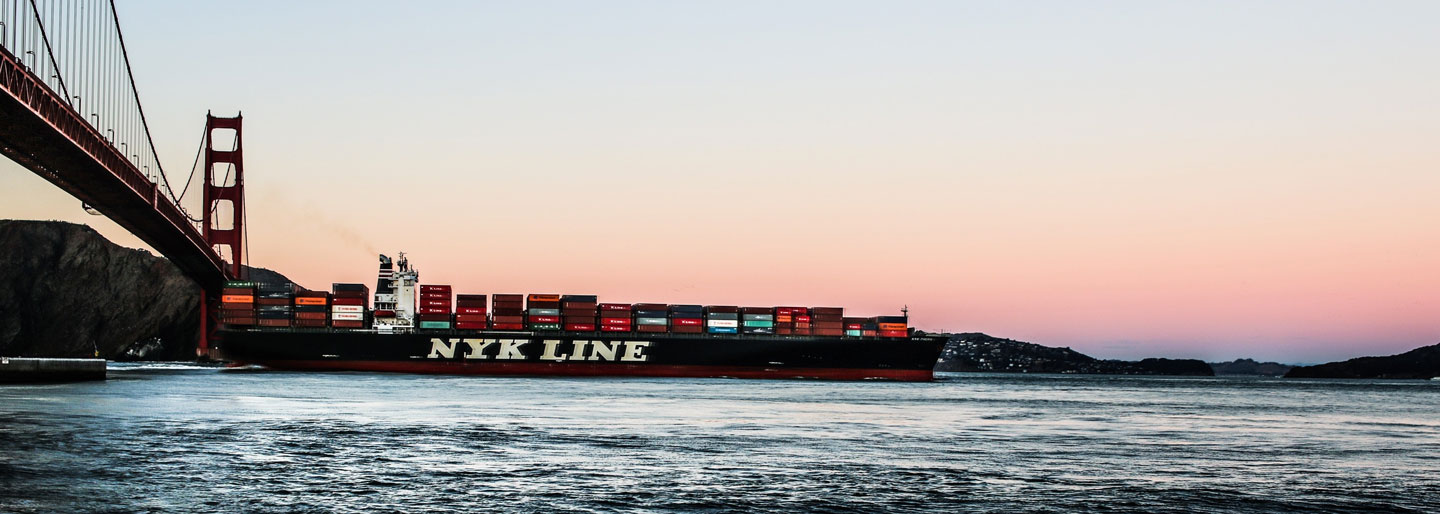
FBA with Transporteca
Many new Amazon FBA sellers find the process of getting their products to FBA overwhelming – and we understand why! It is a complicated process which requires a certain amount of knowledge and experience.
Transporteca is an experienced operator when it comes to FBA shipments, and we have already handled countless shipments to Amazon.
We cooperate with multiple trusted partners, who fully understand the process and requirements of getting shipments successfully delivered to Amazon’s Fulfillment Centres.
When you book your shipment with Transporteca, we make sure that everything relating to transportation is taken care of, including customs clearance. Our partners make sure that your shipment is packed and labelled to fit Amazon’s requirements, and we take care of arranging delivery appointments with Amazon in due time.
We manage everything in between pick-up at your manufacturer’s warehouse until your products are checked in at an Amazon Fulfillment Centre. Trust us with the logistics, then we guarantee compliance with Amazon’s requirements – and you can spend your time focusing on your business.
Looking to ship your products to Amazon FBA? Simply select ‘Amazon FBA’ in the shipping option dropdown when you search for shipping quotes on our website.
For any further questions, please get in touch.
Check Amazon’s FAQ’s for more information on FBA, or read the full guide to create a FBA shipment here.
